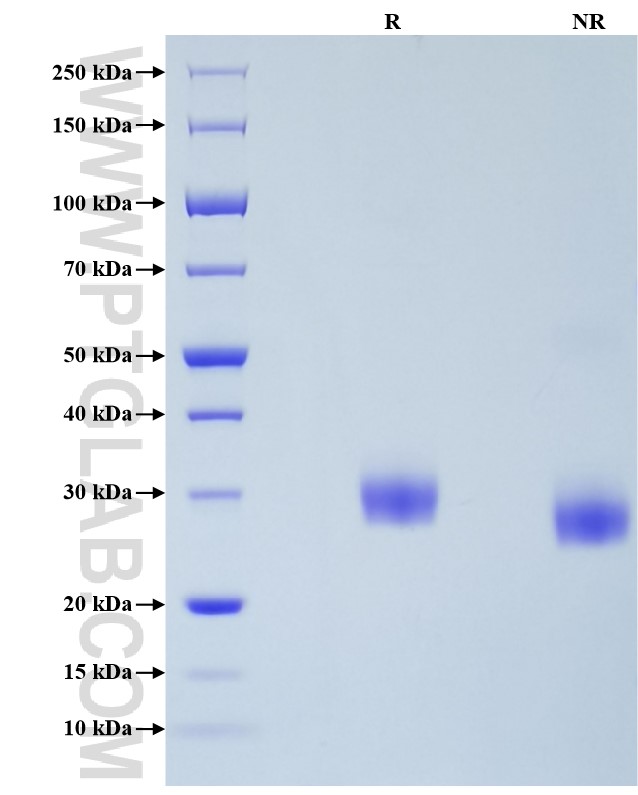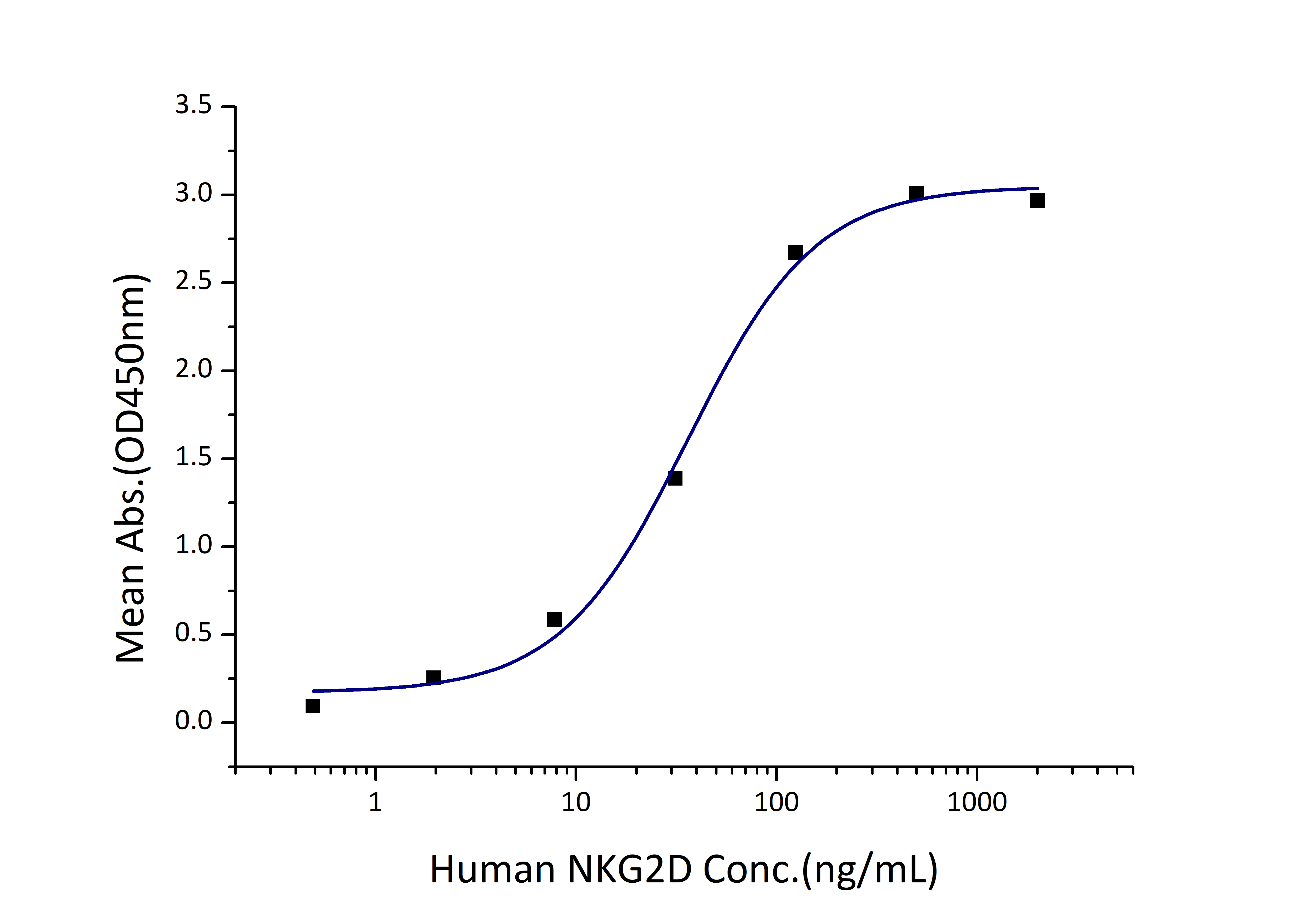Recombinant Human ULBP2 protein (His Tag)
种属
Human
纯度
>95 %, SDS-PAGE
标签
His Tag
生物活性
EC50: 18-72 ng/mL
验证数据展示
产品信息
| 纯度 | >95 %, SDS-PAGE |
| 内毒素 | <0.1 EU/μg protein, LAL method |
| 生物活性 |
Immobilized Human ULBP2(His tag) at 2 μg/mL (100 μL/well) can bind Human NKG2D (hFc tag) with a linear range of 18-72 ng/mL. |
| 来源 | HEK293-derived Human ULBP2 protein Gly26-Ser217 (Accession# Q9BZM5) with a His tag at the C-terminus. |
| 基因ID | 80328 |
| 蛋白编号 | Q9BZM5 |
| 预测分子量 | 22.5 kDa |
| SDS-PAGE | 26-32 kDa, reducing (R) conditions |
| 组分 | Lyophilized from 0.22 μm filtered solution in PBS, pH 7.4. Normally 5% trehalose and 5% mannitol are added as protectants before lyophilization. |
| 复溶 | Briefly centrifuge the tube before opening. Reconstitute at 0.1-0.5 mg/mL in sterile water. |
| 储存条件 |
It is recommended that the protein be aliquoted for optimal storage. Avoid repeated freeze-thaw cycles.
|
| 运输条件 | The product is shipped at ambient temperature. Upon receipt, store it immediately at the recommended temperature. |
背景信息
NKG2D is an activating cell surface receptor that is predominantly expressed on cytotoxic immune cells. NKG2D recognizes a wide range of ligands. In humans, the NKG2D ligand (NKG2DL) includes MICA, MICB, and six members of the ULBP family (ULBP1-6). ULBPs are MHC class I-related molecules. ULBP2 contains two Ig-like domains, the alpha-1 and alpha-2 domains characteristic of the MHC class I family, but lacks the alpha-3 domain. It can be expressed as either a transmembrane or GPI-linked protein, or released from the cell surface. ULBP2 binds and activates the NKG2D, mediating the recruitment and activation of NK cells.
参考文献:
1.D Cosman, et al. (2001) Immunity. 14(2):123-33. 2.Lola Fernández-Messina, et al. (2011). J Cell Sci. 124(Pt 3):321-7. 3.Ruipeng Wang, et al. (2014). PLoS One. 9(3):e91133. 4.Felix M Wensveen, et al. (20118) Front Immunol. 8:9:441. 5.Shixin Duan, et al. (2019) Mol Cancer. 18(1):29.

